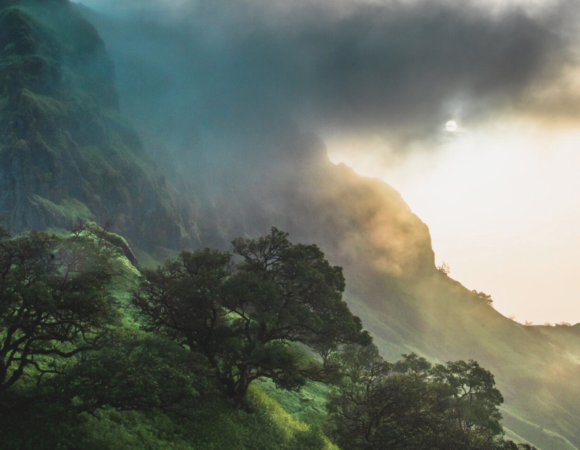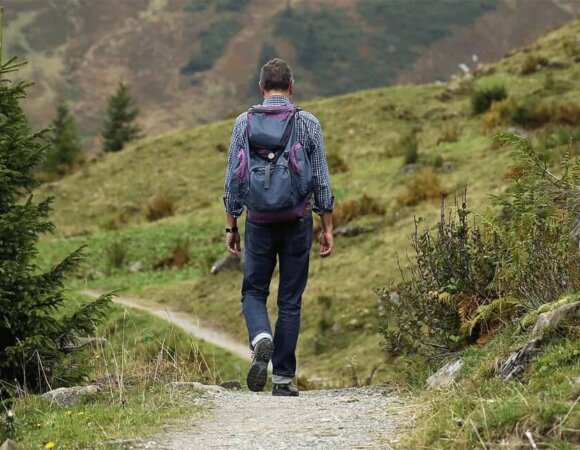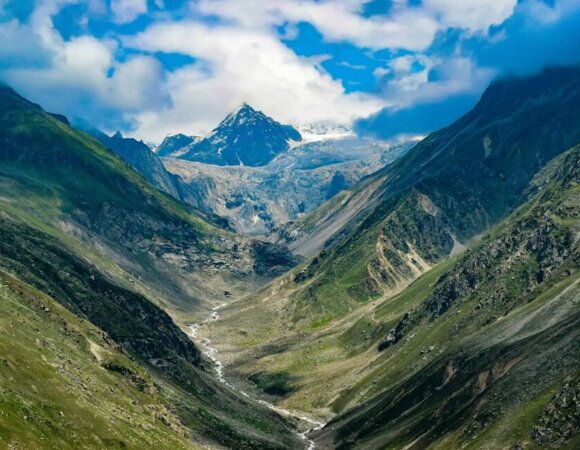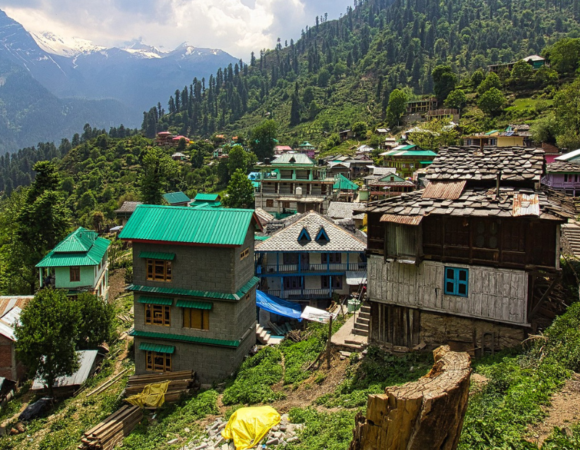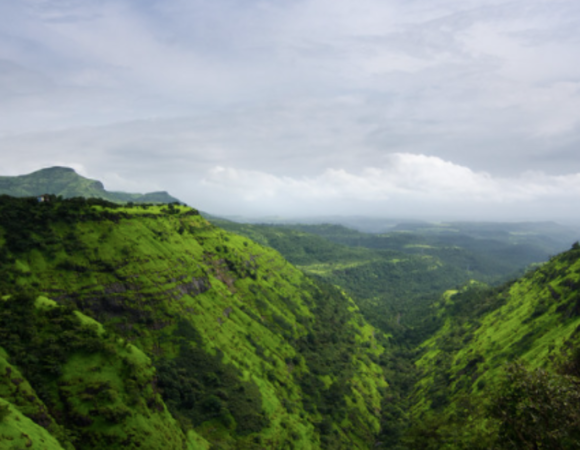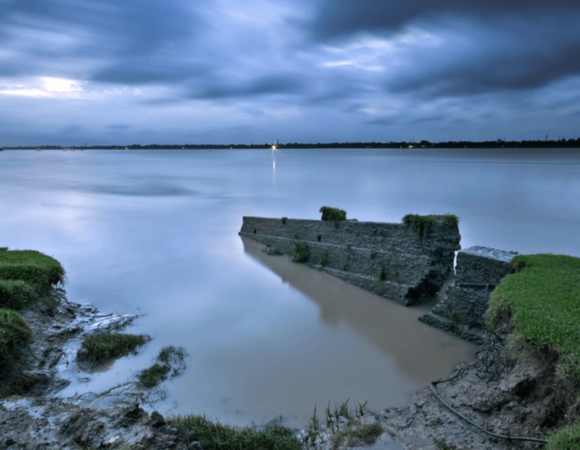Delhi To Kamati Baug Distance, Connectivity, Places To Visit & FAQ’s
Kamati Baug is nestled within the bustling cityscape of Vadodara in Gujarat. Kamati Baug attracts travellers and locals with its serene ambiance and verdant beauty. Kamati Baug is also known as Sayaji Baug. Sayaji Baug or the Sayaji Garden is one of the biggest public gardens of India. Kamati Baug is a massive green square in the middle of the town.
Table of Contents
Toggle
It will fascinate you with blossoming flowers in the huge landscaped gardens full of heavenly fragrance and cool breeze. This garden is important social and activity centre for the residents of the city.
Kamati Baug is present at an elevation of 115 ft. above sea level. Vadodara has population of about 21 lakhs. Kamauti Baug covers an area of around 0.46 km sq. History of Kamati Baug dates back to 19th century.
Delhi to Kamati Baug distance is about 1,036.1 km and it will require a drive of 17 hours or more to reach there.
About Delhi
Delhi is also known by the name of “Dilli”. It is capital of the India, also known as “the heart of nation”. The history of Delhi dates back to 1052 AD. It was founded by Anangpal Tomar. The word Delhi came to existence when Raja Dhillu established a city near the site that is currently known by the name of Qutub Minar.
It was ruled by Tomars, Mughals, Chauhans and Gautamas. Delhi has been one of the most important places of the nation. It is epicentre of politics as it has headquarters of the main pillars of India’s democracy including, legislature, executive and judiciary.
Delhi is famous for its heritage sites such as Red Fort, Qutub Minar, India gate etc. It is Known for its local silver smiths who expertise in the art of making silver tea sets, silver jewellery and showpieces. Meena Bazaar and Chandni Chowk are also factors of attraction for the tourists.
About Kamati Baug
Kamati Baug is the biggest garden in Western India with the area surrounding more than 100 acres. It has a rich flora of more than 98 species of trees. It is one of the finest gardens in India, and is maintained by Vadodara Municipal Corporation. Thousands of tourists and visitors come here for pleasant view of the garden. The floral beauty of this garden can allure anyone with the essence of serenity and greenery.
This garden is home to the Baroda Museum, Picture Gallery, the Sardar Patel Planetarium, and the Sayaji Baug Zoo. There are three entrance gates. The main gate is at Sayaji Circle. This gate is present at a distance of 800 meters from the main city railway station. The second gate is present in between first and third gate. The third gate is present at Rana Pratap square in Fatehganj area.
It is one of the largest public gardens in Western India. Kamati Baug is situated on the river Vishwamitri. The park is dotted with water fountains, several bronze sculptures, and children’s playground equipment. The Art Gallery would give you a glimpse of the Mughal miniatures and manuscripts on palm leaves by the Buddhist and Jain preachers. It is also home to an open-air theatre and an enormous floral clock.
One will witness statues of two small boys while roaming in the park. These statues were actually commissioned as a tribute to the two boys from Dhari, Amreli, by Maharaja Sayajirao Gaekwad III. These boys saved the Maharaja from a tiger during a hunting expedition. Sayaji Baug was dedicated to the citizens of Vadodara by Maharaja Sayaji Rao Gaekwad III in 1879.
History of Kamati Baug
Kamati Baug was built by Sayajirao III in 1879. Baroda Museum and Art Gallery was set up by the Gaekwads in the 1890’s. It is situated within the Kamati Baug. The displayed works are based on innumerable number of subjects including geology, natural history, and archeology. Sayaji Bagh in Vadodara also has a planetarium named after the Indian freedom fighter Sardar Patel.
The Inspiration of a Zoo in Baroda came from Maharaja Sayajirao Gaekwad III. He was a Great Visionary Ruler of Baroda. It was way back in 1875 when a tract of land on the bank of river Vishwamitri, on the outskirts of the city. It was chosen by the Maharaja to develop a vast garden and a zoo.
The Sayaji Baug Zoo, situated on both the banks of the Vishwamitri river, was opened as part of the original park. The Maharaja donated his own private collection of Indian and Exotic Animals to the Zoo. on 8th January 1879, the park was declared open to the public. Sayaji Baug was dedicated to the citizens of Vadodara by Maharaja Sayaji Rao Gaekwad III.
Delhi To Kamati Baug Distance Keypoints
| Area | Kamati Baug, Vadodara |
| Elevation | 115 ft. |
| Duration | October to March |
| Best season | November |
| Weather | Pleasant |
Delhi To Kamati Baug Distance Highlights
- Kamati Baug is a type of place which makes you witness the beauty of Indian historical architecture along with the floral beauty and lush greenery.
- This place provides insight into the life of rulers of Vadodara through the weapons, paintings etc. placed in the Baroda museum of Kamati Baug.
- Kamati Baug truly shows the magical experience by making one witness the fusion of historical architecture, science park and floral garden. These factors make Kamati Baug a must visit place for everyone.
Delhi To Kamati Baug Distance: Places To Visit In Kamati Baug
1. Baroda museum & Art gallery
The Sayajirao III was keen lover of peace and prosperity based on education. He believed that education was the only leaver by which our country and our people could be moved from the inertia of ages that had weighed them down. So he established library services, Kalabhavan, Sanskrit Mahavidyalaya, The Oriental Institute and The Baroda Museum. The Baroda Museum and the Picture Gallery, are two separate two-storied buildings. Both of them are built in the Indo-Saracenic style of architecture.
The general outline of the museum building is in conformity with the traditional local Maratha architecture. The foundation stone of the museum building was laid in 1887 and the building was completed in 1894. The construction of the picture gallery building started in 1908 and was completed in 1914.
This museum and art gallery houses the symbol of early rulers of baroda. One can see ancient Weapons, musical instrument, old cloths, old containers etc. in the museum. It provides insight into the beauty of ancient heritage and culture of Baroda.
2. Sardar Patel Planetarium
The foundation stone of Sardar Patel Planetarium was laid in 1974. It was inaugurated two years later by Dr. H.N. Sethna, Chairman of the Atomic Energy Commission. The purpose of setting it up was to popularise science and astronomy among people. It was named after Sardar Vallabhbhai Patel to commemorate the birth centenary of the freedom fighter.
The planetarium has set up a ‘Science Park’ in collaboration with the National Council of Science Museums. The area of this park is spread over 2500 square meters. It has more than 15 exhibits relating to various theories of physics and astronomy. It has children’s open-air theatre in the basement with a seating capacity of 300 persons.
It is used by schools for educational programmes relating to science and astronomy. This planetarium will give you an amusing experience. The visuals of night sky watching is truly majestic and unforgettable. This place is must visit for everyone.
3. Kirti Mandir
Kirti Mandir was built as a cenotaph for the Gaekwad. Kirti Mandir or the Temple of Fame was constructed by Maharaja Sayajirao Gaekwad III in the year 1936. This temple Boasts of architectural splendour which attract tourists. The building features a number of beautifully structured balconies, terraces and tombs. There brilliantly carved shikhara which forms the centrepiece of the attraction.
The shikhara consists of carvings of the sun, moon and earth along with a map of undivided India. The interior hallways boasts of a wide selection of exquisite paintings and murals. It also includes works of renowned artists such as Nandalal Bose. The central hall within Kirti Mandir is now used for conducting prayers and musical concerts.
4. Mandvi Gate
Its name translates to mean “a pillared hall” in Sanskrit. Mandvi gate is a pavilion or Mandapa standing precisely on the midpoint of the city of Vadodara. The structure was initially built as a two-storied pavilion by the Gujarat Sultanate and later expanded to four storeys by the Gaekwads. The massive structure consists of three arched doorways and a domed clock tower on the top.
During the Gaekwad era, the Mandvi Gate was the place from which all essential announcements were made. This historical wonder, which is now one of the most significant tourist places in Vadodara, is decked with lights during all festivals and becomes a sight of wonder. Mandvi gate is an example ancient masterpiece which make truly a site to behold.
5. Tapovan Temple
Tapovan is a beautiful temple complex built by Indian Oil Corporation. It is now maintained by Reliance Petrochemical Industries. The architecture of the temple is unique and its ceilings are designed with perfect color combinations which is a delight to see. It is a Hindu temple situated inside the Petrochemical Township in Vadodara.
It is surrounded by a lush green garden. The temple complex consists of many shrines dedicated to Lord Shiva, Goddess Durga, Mansadevi, Lakshmi-Narayana, Tirupati Balaji, Navgraha, and Satyanarayan. It also houses a Buddhist style dhyan khand. Also, there is a meditation hall and Gaushala in the temple premises. This place makes your mind calm and immerses you in the ocean of peace and calmness.
Delhi To Kamati Baug Distance: Places To Visit Near Kamati Baug
1. Laxmi Vilas Palace
Laxmi Vilas Palace is believed to be India’s largest private residence. It is believed to be nearly four times larger than the Buckingham Palace. This palace sprawls over a large area with mango orchards, a zoo, a golfing arena and club, a pond and elevators. There is a small railway network running across its lush green gardens. It was built by Maharaja Sayajirao Gaekwad III in the year of 1880.
The Maharaja Fateh Singh Museum of the Palace is said to exhibit original paintings of the famous Indian artist, Raja Ravi Verma. Witnessing their beauty is truly an experience in itself during your visit to this palace. You will see the famous Darbar Hall. It is a place where most of the musical concerts and events are presently held.
Lakshmi Vilas Palace has been built in an Indo–Saracenic style architecture. The best thing about Darbar Hall is the Belgian coloured glass windows in addition to a collection of bronze, marble and terracotta sculptures with armoury collections.
2. Sursagar lake
Sursagar lake is formerly known as the Chandan Talav. This Lake derives its name from that of its maker, Sureshwar Desai. It is present in the middle of the city of Vadodara. This 18th-century lake remains full of water throughout the year. The biggest attraction of the lake is the 120 feet tall statue of Lord Shiva that stands in the centre of the lake.
The enormous statue is lit up on Maha Shivratri. The lake itself becomes the heart of a grand celebration. This lake is one of the most prominent places to visit in Vadodara during this festival. The lake is also a popular boating spot in Vadodara, and many boating and yachting tournaments are held here.
You can spend time lounging on the low walls that surround the water. You can take a boat ride across the lake. The peaceful surroundings are ideal to enjoy relaxing evenings.
3. The EME Temple
The EME Temples is a symbol of the secularity practised in the Indian Army. This temple is also known as the Dakshinamurthy temple. It primarily houses a massive idol of Lord Shiva, along with a miniature Lord Ganesha. The idol of lord Ganesha was specially brought in from Mahabalipuram. There is also a silver arch with the holy words “Om Namah Shivaya” engraved on it.
This temple is covered with war scraps and aluminium sheets. It is a popular opinion among archaeologists that this temple is unique regarding its design, concept and geodesic design. The unique aspect is how the temple supports secularism by incorporating holy symbols from every religion in its structure.
The Kalash on the top symbolises Hinduism. The ”ome signifies Islam. The Tower represents Christianity. The Golden-structure above the tower expresses Buddhism and the Entrance stands for Jainism. The EME temple makes you witness the beauty of secularism and togetherness.
4. Nyaya Mandir
The meaning of Nyaya Mandir is ‘Temple of Justice’. It is the District Court of Vadodara city in the state of Gujarat. Situated in the heart of the city, this place is marvelous Piece of architecture. This is the result of architecture style of the of Madras architect Robert Fellowes Chisholm.
The building Is inspired by a varied type of architectural styles. One can notice elements belonging to the Indo-Saracenic as well as the Mughal architecture. The structure houses a sculpture of Maharani Chimnabai, the first wife of Gaekwad Maharaja Sayaji Rao III.
Things To Do In Kamati Baug
Toy Train
The toy train ride used to run on a track of width 10 inches (250 mm) covering a distance of 3.5 km. It gives the entire view of the garden to riders. Now a new train has been introduced instead of this small toy train. Its name is joy train in which even adults can sit. Joy train is bigger than the toy train. The toy train ride was a gift to the children of Vadodara from the royal Gaekwad dynasty. Every year many tourists come here to feel the nostalgic feeling of toy train.
The zoo and aquarium
The zoo present in the Kamati Baug offers 167 types of 1103 animals of various sizes and shapes. Asiatic lions are the most popular of the attractions. It also has a different bird zoo which has many different types of birds. It attracts large number of tourists and visitors.
Floral Clock
The floral clock was the first of its kind in the state. It consists of an hour, minute and seconds hand that move on the 20 ft. diameter dial. The machinery moving the clock is underground, giving the clock a natural look. The circular dial covered with lush greenery and beautiful floral designs can makes an amazing view.
Delhi To Kamati Baug Distance: Connectivity
Distance between Delhi and Kamati Baug is 1,036.1 km which can be covered in 17 hours or more via NE 4.
Delhi To Kamati Baug Distance By Road
Delhi to Kamati Baug Distance is around 1,036.1km. You can easily travel with a bike or a car according to your convenience.
Delhi To Kamati Baug Distance By Bus
You can easily travel from Delhi to Kamati Baug by bus. You have to take a bus from Delhi ISBT, Kashmiri gate for Vadodara. After reaching Vadodara, you can take a taxi or cab for your destination to Kamati Baug.
Delhi To Kamati Baug Distance By Car
Distance between Delhi and Kamati Baug is about 1,036.1 km. You can start by taking the Delhi-Jaipur Expressway (NH48) and then continue onto the Yamuna Expressway towards Agra. From Agra, take the Yamuna Expressway and connect to the National Highway 44 (NH44) towards Gwalior.
Continue on NH 44 until you reach Indore. From Indore, you’ll need to continue southward on NH52 until you reach the Mumbai Pune Expressway (NE 4). Once you reach the Mumbai Pune Expressway, continue driving until you reach your destination to Kamati Baug.
Delhi To Kamati Baug Distance By Bike
Distance by bike is 18 hrs via NH 48. You will ride through the smooth roads and highways. You have to maintain a descent speed. Bike is best option for the people who are driving enthusiasts.
How To Reach Delhi to Kamati Baug
How To Reach Kamati Baug By Air
You can book a flight from Indira Gandhi International Airport to Vadodara Airport. There are many flights operating between these two cities. After that you can take taxi, cab or bus for your destination to Kamati Baug.
How to reach Kamati Baug by Train
There are many trains which can be found to be running between Delhi to Vadodara directly. It will take take approximately 20 hours to cover the distance between Delhi and Kamati Baug by train.
How to reach Kamati Baug by road
You can easily reach Kamati Baug by taking a bus from Delhi ISBT for Vadodara. There are many buses that leave for Vadodara regularly. It will take around 27 hours to reach Vadodara by Bus via NH 48 and NE 4. You can take cab, bus, taxi for your destination to Kamati Baug once you reach Vadodara. Roads of these routes are well maintained. You will have a safe and smooth journey. You will witness prevailing scenes outside your window. It will make your bus journey more comfortable and memorable.
Final thoughts for Delhi to Kamati Baug Distance
Kamati Baug is really a great place to visit. It provides really an amazing and unforgettable experience. Journey is cosy and filled with peace and calmness. It is a place which makes you witness beauty of ancient architecture and style. It makes you feel excited as well as relaxed both at the same time. It is full of lush green floral beauty. Kamati Baug boasts ancient museums and historical art gallery. It is really fantastic experience.
There are many things to do such as Zoo and aquarium, Toy Train etc. There is peace of nature to admire. Essence of our ancient Indian architecture can be found in the sites of Kamati Baug. It gives us chance to know more about the rulers of Vadodara.
Delhi to Kamati Baug distance can be covered by car, bus, air, according to your choice. It is truly beautiful place which makes you feel the beauty of greenery and old historical architecture.
Frequently Asked Questions(FAQs) For Delhi To Kamati Baug Distance
Which hotels are present near Kamati Baug?
Hotels present near the Kamati Baug are Hampton, Hotel Amber, Grand Mercure Vadodara and Hotel Alpha.
Which restaurants are present near Kamati Baug?
Restaurants present near Kamati Baug include Kala ghoda restaurant, Blue Coriander restaurant, Mezban multi cuisine restaurant and Daily Den.
What is Kamati Baug and where is it located?
Sayaji Baug, also known as Kamati Baug, is a large public park located in Vadodara, Gujarat, India. It was dedicated to the citizens of Vadodara by Maharaja Sayajirao Gaekwad III in 1879 and is situated on the river Vishwamitri.
What are the key attractions of Kamati Baug?
Key attractions of Kamati Baug include a rich flora, the Baroda Museum & Picture Gallery, the Sardar Patel Planetarium, the Sayaji Baug Zoo, and the Toy Train that provides a tour of the park.
Are there any facilities or services available for visitors at Kamati Baug?
Facilities within Sayaji Baug include snack stalls, drinking water, resting areas, and clean restrooms. There are also wheelchair accessibility features for differently-abled visitors.
Is photography allowed in Kamati Baug?
Photography is generally allowed in Sayaji Baug, making it an ideal spot for photographers and nature enthusiasts.
What is the best time of year to visit Kamati Baug?
The park can be visited throughout the year, but the best time to experience its beauty is during the cooler months from October to March when the weather in Vadodara is pleasant.
Is Kamati Baug suitable for children?
Absolutely, Sayaji Baug is family-friendly with numerous attractions catering to children, including the Toy Train, the zoo, and spacious areas for play and picnics.
How much time should I allocate for a visit to Kamati Baug?
Visitors often spend anywhere from 2 to 4 hours to enjoy the park fully. However, if you plan on visiting all the attractions inside the park, you might need a full day.
Is there an entry fee to visit Kamati Baug Baug?
Entry to Kamati Baug itself is free for the public. However, attractions within the park such as the Baroda Museum, the planetarium, and the zoo may charge a nominal fee for entry.
When was Sayaji Baug or Kamati Baug built?
The Sayaji Baug or Kamati Baug was built in 1879 by Maharaja Sayaji Rao III.


